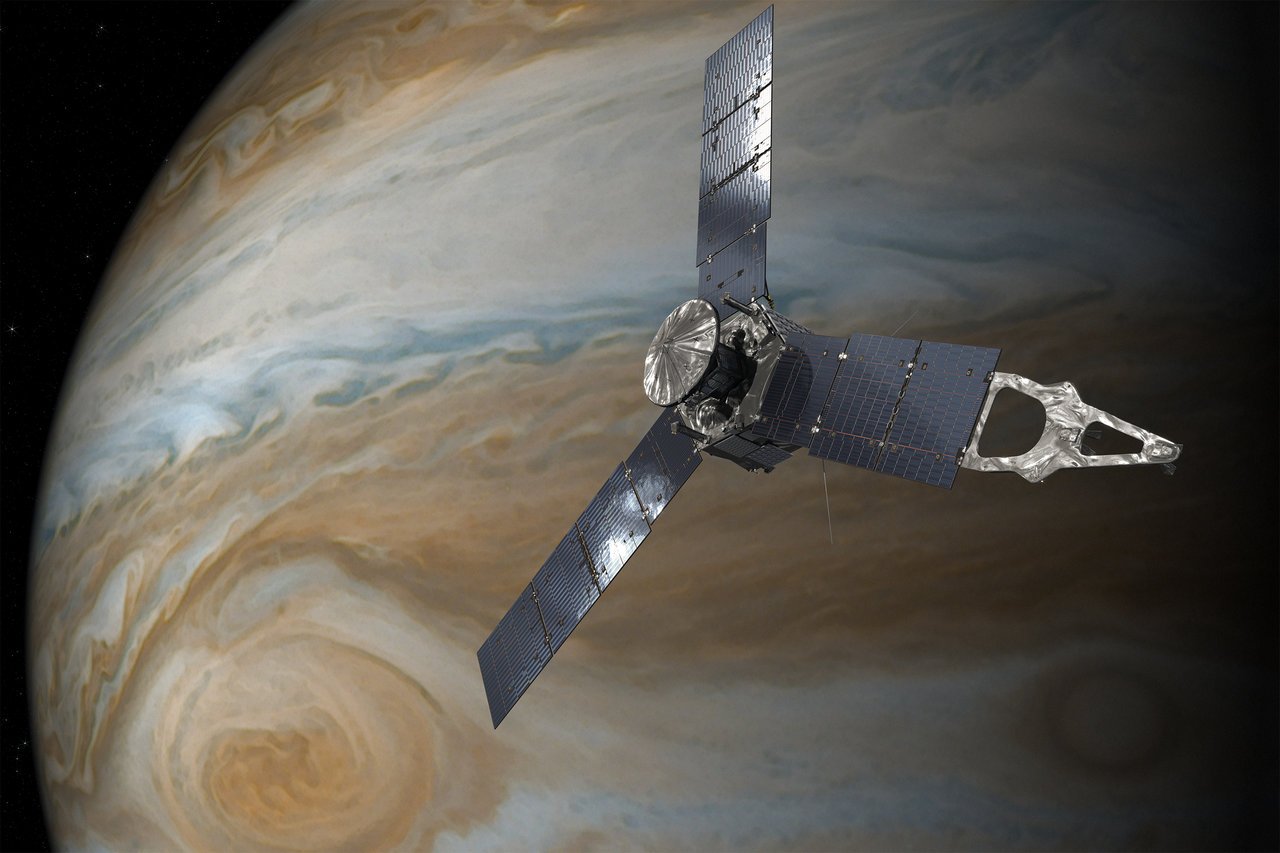
Jupiter has often been referred to as the King of Planets, and for good reason, as it is a massive gas giant, much larger than Earth and the largest planet in our Solar System. It is more than 2.5 times as massive as all the other planets combined, and is a mesmerizing world of colorful bands of clouds wrapping around the globe, which can be seen even in a small telescope, but exhibit incredible detail when seen by spacecraft. Jupiter is also itself the center of a sort of miniature solar system, with dozens of moons orbiting around it. We’ve seen this world up close before by spacecraft such as Voyager and Galileo, but now a new visitor has arrived in the Jovian system: NASA’s spacecraft Juno.
Juno arrived at Jupiter on America’s Independence Day, July 4, 2016. Not only a time to celebrate the country, but it’s also the first return to Jupiter since the Galileo mission, which arrived at Jupiter back on Dec. 7, 1995. Confirmation that the engine burn had completed was received on Earth at 8:53 p.m. PDT (11:53 p.m. EDT) Monday, July 4.
“Independence Day always is something to celebrate, but today we can add to America’s birthday another reason to cheer – Juno is at Jupiter,” said NASA administrator Charlie Bolden. “And what is more American than a NASA mission going boldly where no spacecraft has gone before? With Juno, we will investigate the unknowns of Jupiter’s massive radiation belts to delve deep into not only the planet’s interior, but into how Jupiter was born and how our entire Solar System evolved.”
“This is the one time I don’t mind being stuck in a windowless room on the night of the 4th of July,” said Scott Bolton, principal investigator of Juno from Southwest Research Institute in San Antonio. “The mission team did great. The spacecraft did great. We are looking great. It’s a great day.”
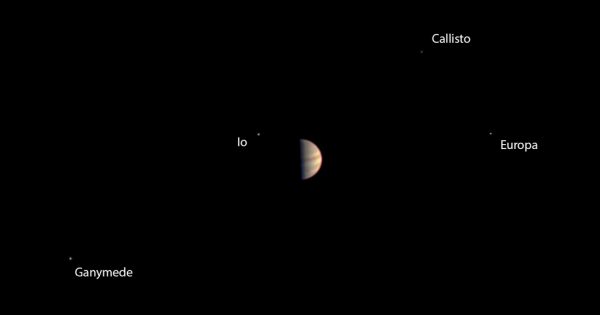
Juno, about the size of a basketball court, successfully entered orbit around Jupiter in a procedure called Jupiter Orbit Insertion (JOI), after completing a 1.76-billion-mile journey from Earth. According to the NASA updates, the orbital entry was so precise it was only one second off from the predicted timing! The spacecraft also then successfully re-oriented itself back to the Sun, to charge the solar panels.
This phase of the mission is the most dangerous and nail-biting, due to the intense radiation belts around Jupiter, also the strongest of any of the planets in our Solar System. The charged particles travel at nearly the speed of light, making them very dangerous for any spacecraft. Juno will orbit closer to Jupiter than any other previous spacecraft, within 3,000 miles of the cloud tops, and is designed to withstand the radiation by dipping in and out of the belts, but it is still a risky maneuver. Juno will circle Jupiter in a long, elliptical polar orbit. In order to enter that orbit, Juno fires its main engine for 35 minutes to slow it down from its previous speed of 130,000 mph, relative to Jupiter. That speed is about 165,000 mph relative to Earth. To give a better sense of that speed, Juno could circle around the entire Earth in only nine minutes. The delay in the radio signal returning to Earth from the spacecraft adds to the nail-biting suspense, since it takes 48 minutes for it to come back all the way to Earth.
“The spacecraft worked perfectly, which is always nice when you’re driving a vehicle with 1.7 billion miles on the odometer,” said Rick Nybakken, Juno project manager from JPL. “Jupiter orbit insertion was a big step and the most challenging remaining in our mission plan, but there are others that have to occur before we can give the science team the mission they are looking for.”
Even apart from the radiation, Juno needs to enter orbit just the right way; if the engine burn is too long, the spacecraft could enter an orbit that is too tight, and if the burn is too short, Juno could simply keep traveling into space without being caught by Jupiter’s gravity.
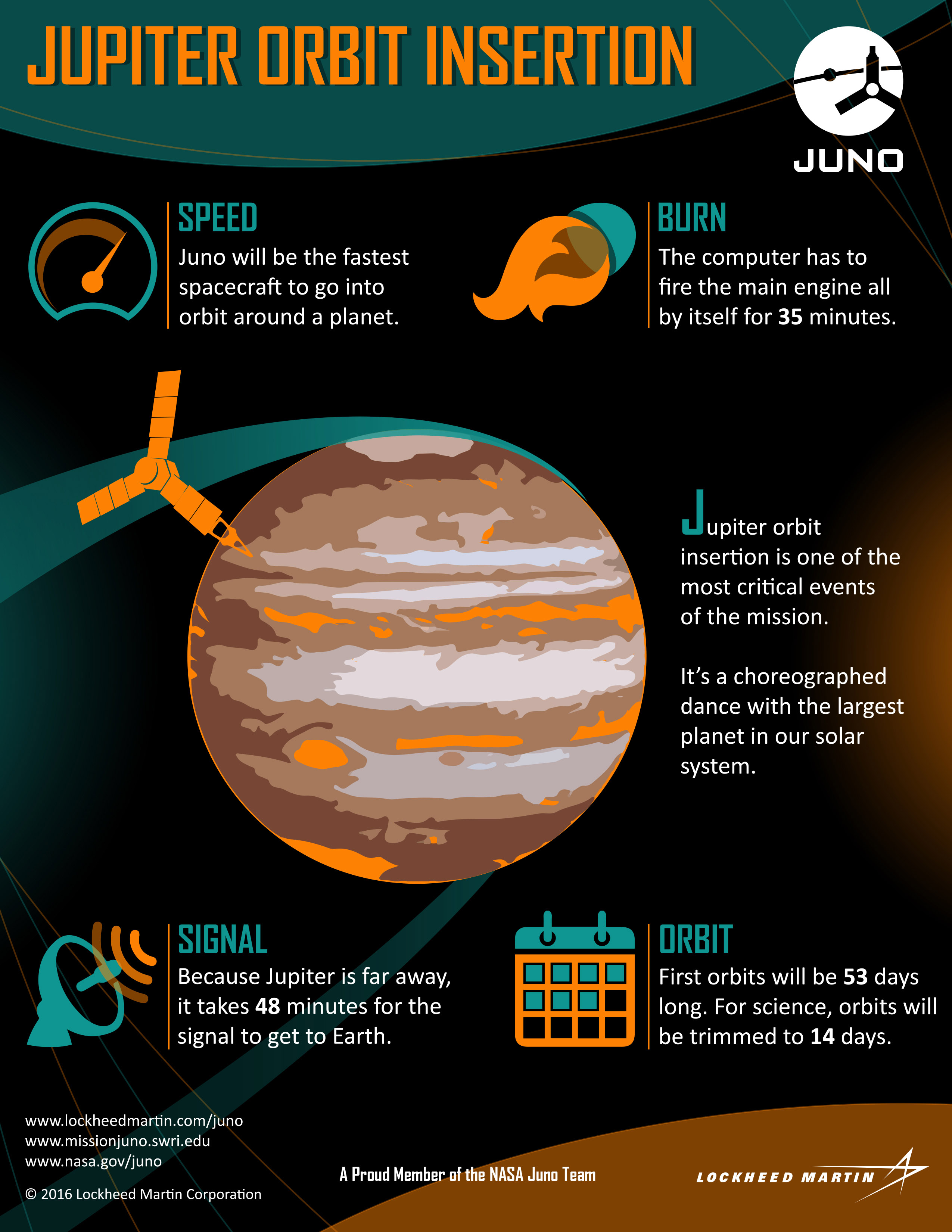
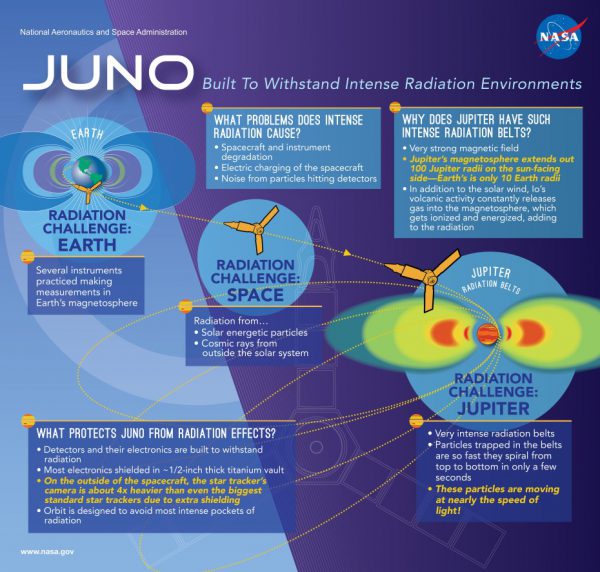
As noted earlier by Kenny Starnes, Juno program manager and leader of the Mission Support Area at Lockheed Martin Space Systems: “There will be a tremendous sense of relief once we know we’ve successfully entered orbit with no anomalies. It’s kind of like winning a late-round tournament game – you can celebrate for a moment, but you know there’s still plenty of work to do in the near future. Soon after JOI we continue our preparation of command sequences for the science mission to begin.”
Juno is the first solar-powered spacecraft to fly to the outer Solar System, first breaking the distance record on Jan. 13, 2016, and the first spacecraft ever to fly with 3-D printed titanium parts.
“Jupiter is five times farther from the sun than Earth, and the sunlight that reaches that far out packs 25 times less punch,” said Nybakken. “While our massive solar arrays will be generating only 500 watts when we are at Jupiter, Juno is very efficiently designed, and it will be more than enough to get the job done.”
Juno first entered Jupiter’s gravitational influence on May 27, 2016. It is also the first spacecraft to enter a polar orbit around Jupiter.
“This is also the first time we’ve ever gone into polar orbit around Jupiter, under its lethal radiation belts and this close to the planet,” Jeff Lewis, Juno lead flight engineer at Lockheed Martin, said. “It’s an example of how the Juno team is daring to do what hasn’t been done before.”
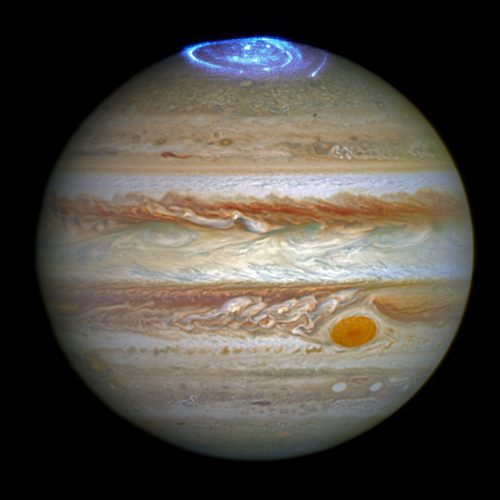
So just what is Juno’s mission? Basically, it is to understand the origin and history of Jupiter. The main objectives include: investigate the existence of a possible ice-rock core; determine the amount of global water and ammonia present in the atmosphere; study convection and deep wind profiles in the atmosphere; investigate the origin of the Jovian magnetic field; and explore the polar magnetosphere. Juno will use nine scientific instruments to carry out these studies.
During this time, Juno will make a total of 37 low dips over the planet, experiencing the equivalent amount of radiation of more than 100 million dental x-rays. In order to avoid the most dangerous parts of the radiation belts, Juno will approach Jupiter from the north and then drop to an altitude below the belts, exiting to the south. This kind of radiation encounter is unprecedented for any spacecraft so far. The instruments are protected inside a titanium vault designed especially for Juno.
“Jupiter is a whole different animal,” Starnes said. “The planet is just massive – it’s both the largest and fastest spinning planet out there. This is one of many aspects that makes this mission unique to others we’ve participated with in the past.”
Over the next few months, Juno’s mission and science teams will perform final testing on the spacecraft’s subsystems, final calibration of science instruments, and some science collection. The first images should be available about the end of August, after Juno finishes finalizing its orbit.
Ahead of Juno’s arrival, the Hubble Space Telescope took some stunning new images of bright, colorful auroras in Jupiter’s northern hemisphere, and the spacecraft itself took images of the planet and its four brightest moons. Jupiter’s auroras were first discovered by the Voyager 1 spacecraft in 1979. These auroras are much larger than any on Earth and also much more energetic.
“These auroras are very dramatic and among the most active I have ever seen,” said Jonathan Nichols from the University of Leicester, UK. “It almost seems as if Jupiter is throwing a firework party for the imminent arrival of Juno.”
The last previous spacecraft to visit Jupiter was Galileo, from 1995-2003. Galileo studied Jupiter’s atmospheric composition, including ammonia clouds, as well as several of the planet’s moons. Galileo provided new information about Io, the most volcanically active body in the Solar System, new evidence for a subsurface ocean on Europa and possible similar oceans on Ganymede and Callisto, as well as a magnetic field around Ganymede and exospheres around Ganymede, Callisto, and Europa. It also observed Jupiter’s ring system, which is much fainter than Saturn’s, and composed mostly of dust. The mission ended on Sept. 21, 2003, with the spacecraft being sent into Jupiter’s atmosphere to burn up. This was done to prevent any of the moons, especially Europa, being accidentally contaminated by any earthly bacteria which may still be on the spacecraft. A similar fate will await Juno in 2018.
Before Galileo, the Voyager 1 spacecraft made a close flyby of Jupiter on March 5, 1979, taking close-up images and gathering other data. Voyager 1 also made the first discovery of the active volcanoes on the moon Io. It later went on to conduct a flyby of Saturn, before leaving the Solar System.
The Juno spacecraft was launched Aug. 5, 2011, from Cape Canaveral Air Force Station, Fla.
More information about the Juno mission is available here.
Want to keep up-to-date with all things space? Be sure to “Like” AmericaSpace on Facebook and follow us on Twitter: @AmericaSpace




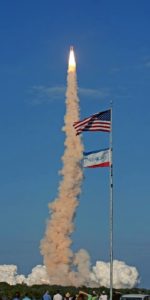
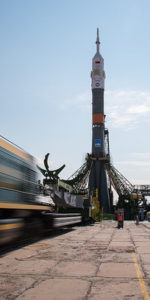
No matter the outcome, the Juno mission underscores the genius in planning, design and execution of such an important planetary exploration. Can’t wait to see the close-up pictures
The MIssion Juno website allows you to upload your images of Jupiter. We can help NASA decide what points of interest to capture. That is pretty cool! Also I really dig the infographics in this blog post.